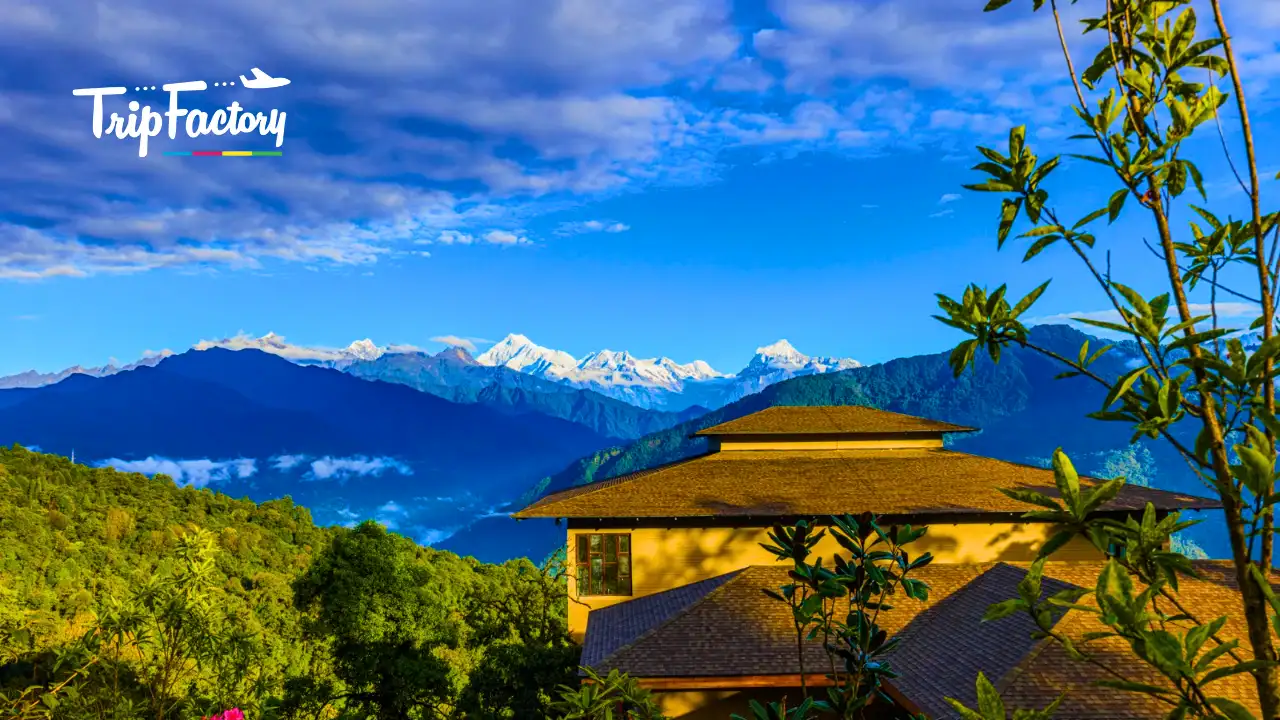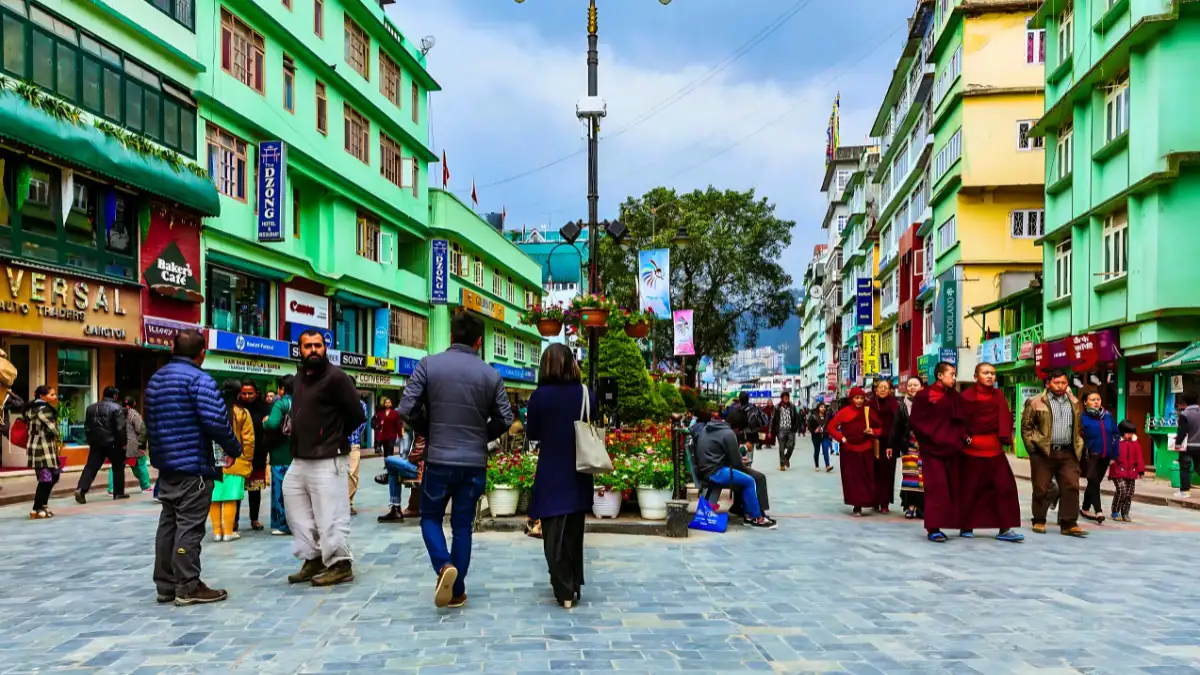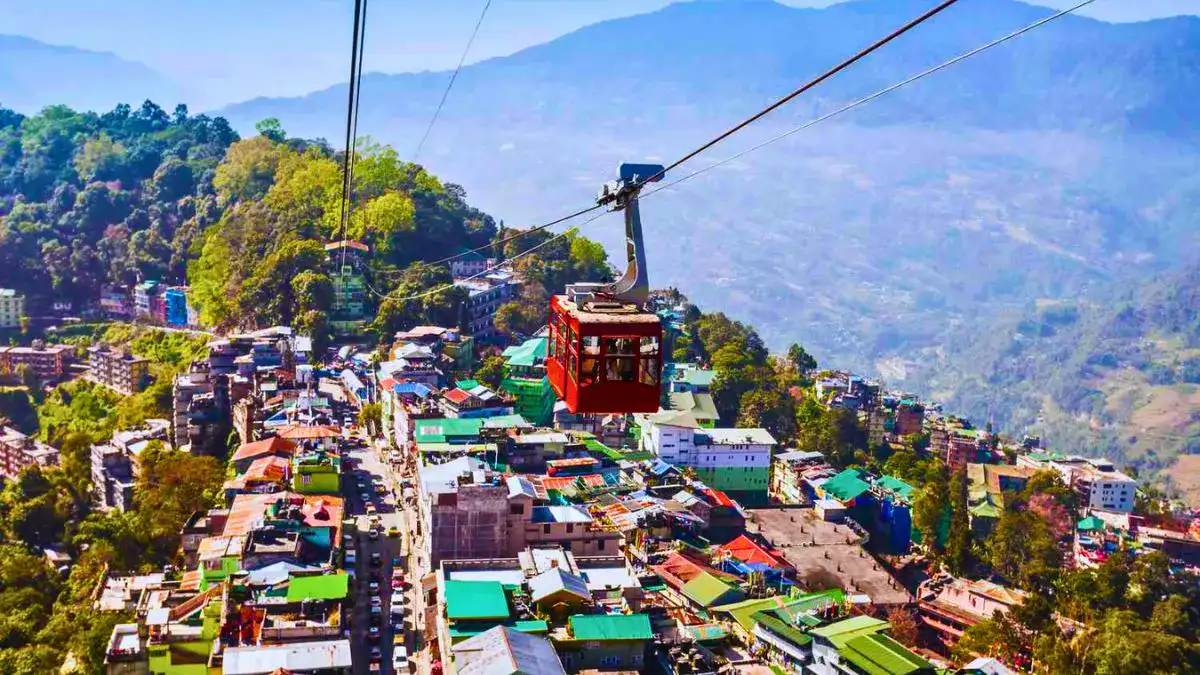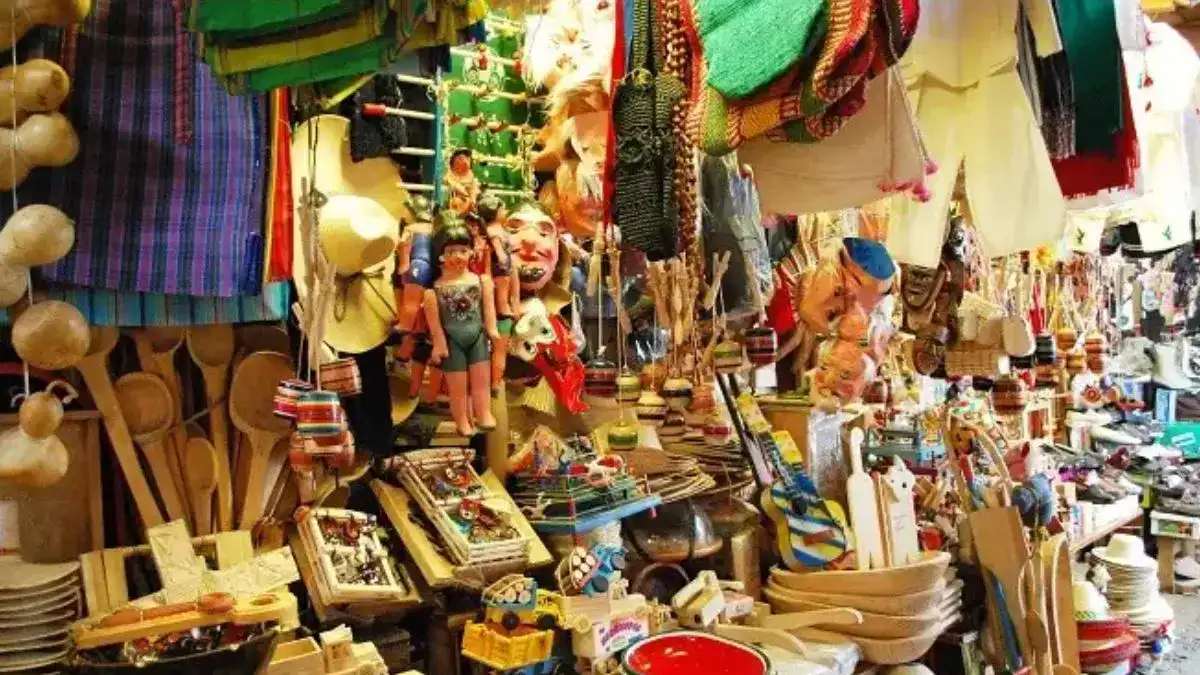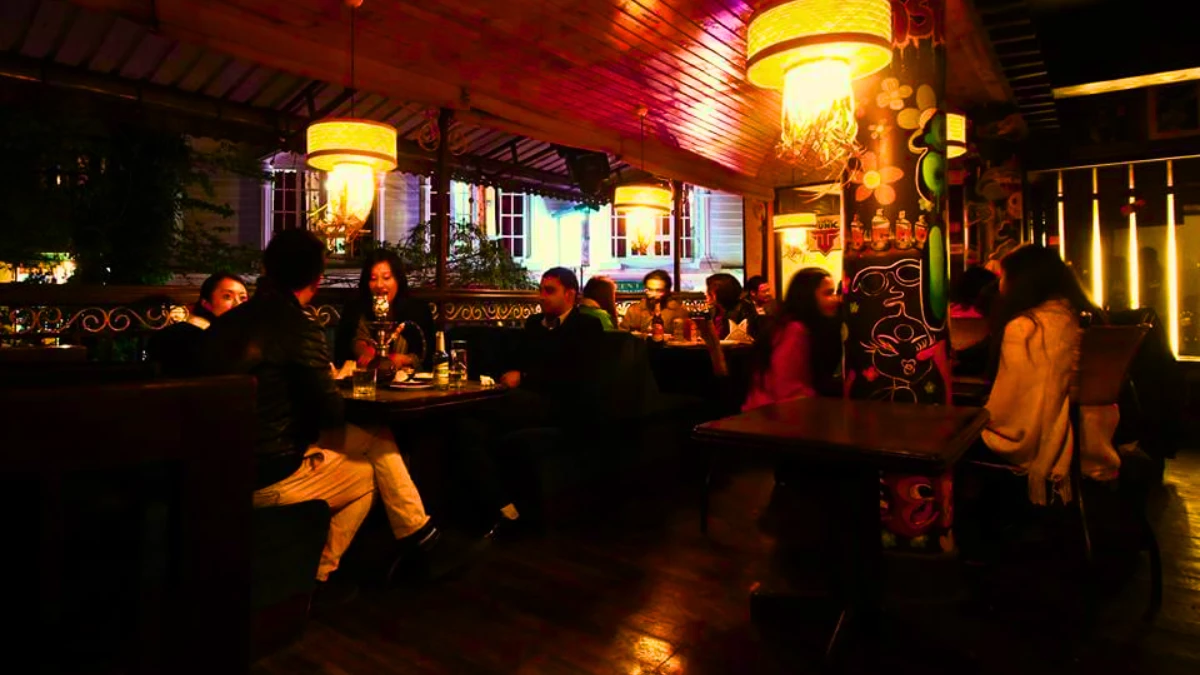Gangtok, the vibrant capital of Sikkim, is one of the most sought-after destinations in Northeast India. Known for its breathtaking views of the Himalayan ranges, cultural heritage, and exciting activities, Gangtok offers something for every traveler. Whether you’re planning to explore monasteries, enjoy adventure sports, or simply relax amidst nature, there are several things you must keep in mind before visiting this stunning town.
This comprehensive guide will help you navigate your journey to Gangtok with ease and make the most of your visit. From permits to travel tips and packing lists, we’ve got you covered.
Here are the Gangtok Travel Essentials: 10 Key Things to Know Before You Visit:
- Best Time to Visit Gangtok
- Permits and Documentation
- Packing Checklist
- How to Reach Gangtok
- Transportation in Gangtok
- Popular Tourist Attractions
- Best Places to Stay
- Local Cuisine and Dining Options
- Travel Tips for Safety and Enjoyment
- Budget Planning
Gangtok Travel Essentials Things to Remember
1. Know About All the Permits Required
Gangtok and its surrounding areas have several restricted zones, especially near international borders, where travelers must carry permits.
- Permits Needed:
- Indian Nationals: Inner Line Permit (ILP)
- Foreign Nationals: Protected Area Permit (PAP) (valid for 60 days)
Some areas, like Nathula Pass and Gurudongmar Lake, are off-limits to foreign nationals. Permits are issued by government offices or through licensed tour operators.
Documents Required for Permits:
- ID proof (Passport, Aadhaar, or Voter’s ID)
- Two passport-sized photographs
- INR 200–500 permit fees (varies based on the area)
Pro Tip: Always carry multiple photocopies of your ID proofs and photographs to avoid delays while obtaining permits.
2. Keep Yourself Warm
Gangtok’s weather remains cold throughout the year, with temperatures dropping significantly in winter and at higher altitudes.
Packing Essentials for Cold Weather:
- Thermals, jackets, gloves, and woolen socks.
- A sturdy pair of boots for trekking and walking on uneven terrain.
- Rainproof jackets or umbrellas for unexpected drizzles.
Even during summer, higher altitudes like Tsomgo Lake and Nathula Pass require warm clothing.
3. Respect the Culture
Gangtok is rich in culture and traditions, largely influenced by Buddhism. As a traveler, it’s important to respect the local customs and beliefs.
Do’s:
- Dress modestly, especially when visiting monasteries.
- Remove shoes before entering religious sites.
Don’ts:
- Avoid loud or disruptive behavior at sacred places.
- Refrain from pointing your feet toward religious artifacts or monks.
If you’re visiting during festivals like Saga Dawa or Losar, try to learn about the traditions and participate respectfully.
4. Stay Safe During Adventure Activities
Adventure enthusiasts flock to Gangtok for activities like trekking, paragliding, and river rafting. While these are thrilling, safety should be your priority.
Key Safety Tips:
- Book adventure activities only with licensed tour operators.
- Ensure all safety equipment is provided and properly fitted.
- Follow the instructor’s guidance during activities like paragliding or river rafting.
Top Adventure Activities:
- Paragliding near Tashi Viewpoint.
- Trekking to Dzongri or Goechala.
- Mountain biking through winding roads.
5. Gangtok Has No Airport
Travelers need to plan their journey carefully, as Gangtok doesn’t have its own airport.
- By Air: The nearest airport is Bagdogra Airport (124 km away). From there, you can hire a private or shared taxi to Gangtok, which takes around 4–5 hours.
- By Rail: The nearest railway station is New Jalpaiguri (NJP), located 120 km away.
- By Road: Shared or private cabs are available from Siliguri, Darjeeling, and Kalimpong.
6. Avoid the Rainy Season
Monsoon in Gangtok (June–September) brings heavy rains, landslides, and challenging road conditions.
- Many attractions, like Nathula Pass, remain inaccessible during this period.
- Roads often become slippery and unsafe for driving.
Best Time to Visit:
- Spring (March–May): Ideal for witnessing blooming rhododendrons and lush greenery.
- Autumn (October–November): Clear skies and stunning views of the Kanchenjunga range.
7. Save Money by Sharing
Traveling in Gangtok can be expensive if you rely solely on private taxis. Shared cabs are a budget-friendly alternative.
- Shared taxis operate frequently within the city and to nearby attractions.
- This option is not only economical but also offers an opportunity to interact with locals.
8. Adjust to the Climate
Gangtok is at a high altitude, and areas like Nathula Pass are even higher. Altitude sickness can affect some travelers.
How to Prevent Altitude Sickness:
- Spend a day acclimatizing in Gangtok before visiting higher altitudes.
- Drink plenty of water and avoid alcohol.
- Carry medications like Diamox, if necessary.
Detailed Travel Essentials for Gangtok
Best Time to Visit Gangtok
| Season | Temperature Range | Highlights |
|---|---|---|
| Spring (March-May) | 10°C to 22°C | Rhododendron blooms, pleasant weather |
| Summer (June-Aug) | 15°C to 25°C | Ideal for sightseeing and trekking |
| Autumn (Oct-Nov) | 5°C to 18°C | Clear skies, best views of Kanchenjunga |
| Winter (Dec-Feb) | -5°C to 7°C | Snow, peaceful environment |
Packing Checklist
| Item | Why You Need It |
|---|---|
| Warm Clothes | Cold weather throughout the year |
| Comfortable Walking Shoes | Uneven terrain and treks |
| Power Bank and Camera | For capturing memories in remote areas |
| Personal Medications | To combat altitude sickness and emergencies |
| Sunscreen and Sunglasses | UV protection at higher altitudes |
Popular Tourist Attractions in Gangtok
1. MG Road
- The central hub of Gangtok, perfect for shopping and dining.
- Highlights: Handicraft shops, local cafes, and vibrant nightlife.
2. Tsomgo Lake
- A stunning glacial lake surrounded by mountains.
- Activities: Yak rides and photography.
3. Nathula Pass
- Located on the Indo-China border, this spot offers breathtaking mountain views.
- Permit Requirement: Only accessible to Indian citizens.
4. Rumtek Monastery
- One of the largest monasteries in Sikkim, showcasing Buddhist culture.
- Highlights: Intricate architecture and serene ambiance.
| Attraction | Highlights |
|---|---|
| MG Road | Shopping, cafes, nightlife |
| Tsomgo Lake | Yak rides, glacial views |
| Nathula Pass | Indo-China border, snowy peaks |
| Rumtek Monastery | Buddhist culture, architecture |
Local Cuisine and Dining Options
Gangtok’s cuisine is a delightful blend of Tibetan, Nepalese, and Indian flavors.
Must-Try Dishes:
- Thukpa: A comforting noodle soup.
- Momos: Steamed dumplings with a variety of fillings.
- Sel Roti: A traditional Nepalese sweet bread.
Best Restaurants:
- Taste of Tibet: For authentic Tibetan food.
- Roll House: Known for its delicious momos and rolls.
Accommodation Options
| Type | Price Range | Recommended Areas |
|---|---|---|
| Budget Hotels | ₹1,000–₹2,000 | Near MG Road |
| Mid-Range Hotels | ₹2,500–₹5,000 | Deorali, Rumtek |
| Luxury Hotels | ₹6,000+ | Hilltop locations |
Travel Costs for 2 People
| Expense | Approximate Cost (INR) |
|---|---|
| Accommodation | ₹6,000–₹12,000 |
| Food | ₹2,000–₹4,000 |
| Transportation | ₹3,000–₹5,000 |
| Adventure Activities | ₹2,000–₹5,000 |
Transportation in Gangtok
Navigating Gangtok and its nearby attractions can be an adventure in itself due to its mountainous terrain. While the town is compact, its roads can be steep and winding. Taxis are the most common mode of transport in Gangtok.
- Private Taxis: These are readily available for sightseeing and airport transfers but can be expensive.
- Shared Taxis: A budget-friendly option for traveling within the town and to nearby destinations. They are commonly used by locals and tourists alike.
- Cable Car Ride: Don’t miss the Gangtok Ropeway, which offers spectacular aerial views of the town and its surroundings.
If you’re planning to explore remote areas like Yumthang Valley or Lachen, hiring a tour operator is advisable as they provide both transportation and guides who are familiar with the routes.
Shopping in Gangtok
Gangtok is a haven for shopaholics, offering a mix of traditional handicrafts, trendy clothing, and unique souvenirs.
Best Shopping Spots:
- MG Road: The main shopping area where you can find Tibetan carpets, Thangka paintings, and wooden masks.
- Lal Bazaar: Perfect for exploring local produce and traditional items like handmade woolen garments and organic tea.
- Directorate of Handicrafts & Handloom: A government-run store showcasing exquisite handwoven fabrics, carpets, and carved wooden artifacts.
What to Buy in Gangtok?
- Tibetan prayer flags
- Sikkimese tea
- Handmade jewelry
- Organic honey and spices
Shopping here is not just about buying souvenirs but also experiencing the local culture and craftsmanship.
Local Festivals and Events
Gangtok’s vibrant culture comes alive during its numerous festivals and events, which reflect the traditions and religious beliefs of the region.
Popular Festivals:
- Losar: The Tibetan New Year celebrated with rituals, dance, and music.
- Saga Dawa: A significant Buddhist festival honoring the birth, enlightenment, and death of Lord Buddha.
- Gangtok Food and Culture Festival: Held in December, this event showcases local cuisine, dance, and music.
Participating in these festivals allows visitors to immerse themselves in Gangtok’s cultural heritage and experience its joyous spirit.
Nightlife in Gangtok
Though Gangtok is a quaint hill station, its nightlife is surprisingly lively.
- Pubs and Bars: MG Road is dotted with pubs and bars like Pub 25 and The Square, offering great food, drinks, and music.
- Live Music Cafes: Places like Baker’s Cafe and Cafe Live & Loud are perfect for enjoying live performances while relishing local and international cuisine.
- Casino Royale: For those seeking some entertainment, Gangtok’s casinos, like Casino Royale in the Denzong Regency, offer a blend of fun and luxury.
The nightlife here is an excellent mix of relaxation and excitement, making it perfect for unwinding after a day of exploration.
Nature and Wildlife in Gangtok
Gangtok is surrounded by lush forests and wildlife sanctuaries, making it an ideal destination for nature lovers.
Key Attractions for Nature Enthusiasts:
- Himalayan Zoological Park: Home to red pandas, snow leopards, and Himalayan black bears.
- Kyongnosla Alpine Sanctuary: Famous for its rare orchids, rhododendrons, and the elusive snow leopard.
- Khangchendzonga National Park: A UNESCO World Heritage Site offering trekking trails, diverse flora and fauna, and stunning views of Mount Kanchenjunga.
These spots provide an opportunity to reconnect with nature and observe the region’s unique biodiversity up close.
Conclusion
Gangtok is a destination that offers an unforgettable blend of natural beauty, cultural richness, and adventure. From exploring serene monasteries to indulging in thrilling activities, there’s something for everyone.
To make your journey hassle free and enjoyable, consider booking your travel package with TripFactory. We handle everything, including permits, accommodation, and guided tours, ensuring a seamless experience. Explore Gangtok with us and create memories that will last a lifetime!
Frequently Asked Question
What is the best time to visit Gangtok?

Gangtok is best visited during spring and autumn, with pleasant weather, rhododendron blooms, clear skies, Kanchenjunga views, and snow-loving winters, but avoid monsoons due to heavy rainfall and landslides.
Do I need a permit to visit Gangtok and nearby areas?

Yes, permits are required for certain restricted areas around Gangtok. Indian nationals need an Inner Line Permit (ILP), while foreign nationals must obtain a Protected Area Permit (PAP), which is valid for 60 days. Some locations, such as Nathula Pass and Gurudongmar Lake, are restricted for foreign visitors.
What documents are required to obtain permits?

Travelers must provide ID proof such as a passport, Aadhaar, or voter ID, along with two passport-sized photographs. Permit fees range from INR 200 to 500. Carrying multiple photocopies of these documents is recommended for convenience.
What should I pack when visiting Gangtok?

It is essential to pack warm clothing, including thermals, jackets, and gloves, as the weather remains cold throughout the year. Sturdy boots are necessary for navigating uneven terrain, and rainproof jackets or umbrellas are useful for unexpected drizzles. Don’t forget power banks, medications, and personal essentials.
How can I reach Gangtok?

Gangtok is accessible by air, rail, and road. The nearest airport is Bagdogra, located 124 km away, and the nearest railway station is New Jalpaiguri (NJP), 120 km from Gangtok. Private or shared taxis are available from Siliguri, Darjeeling, or Kalimpong.

